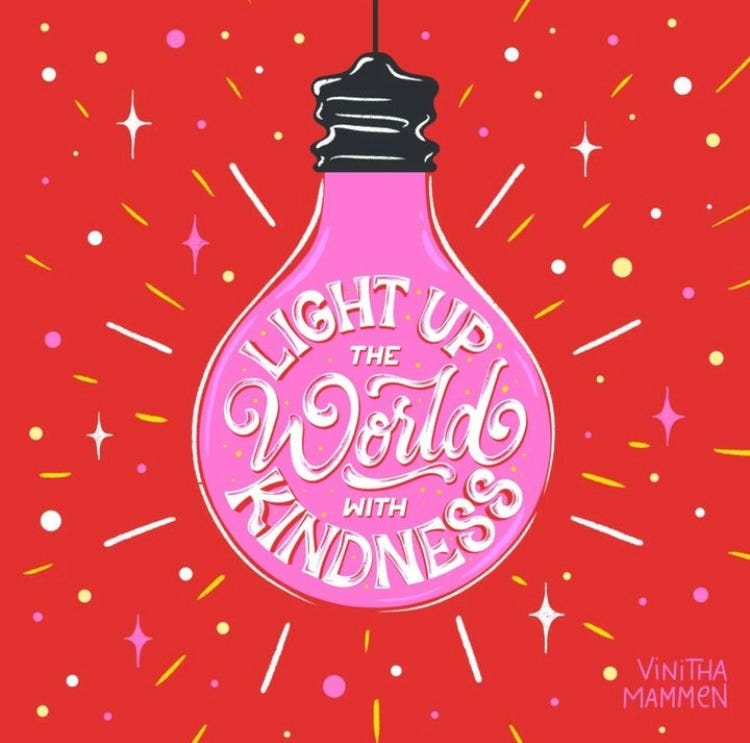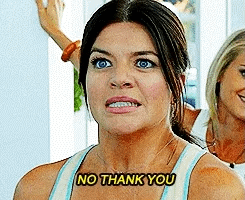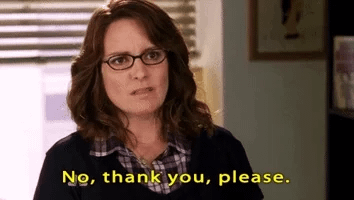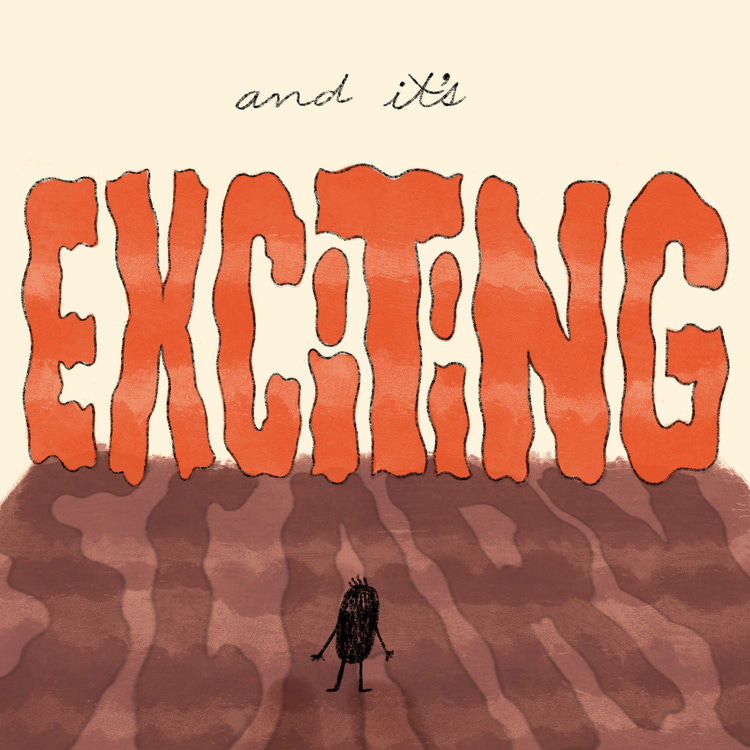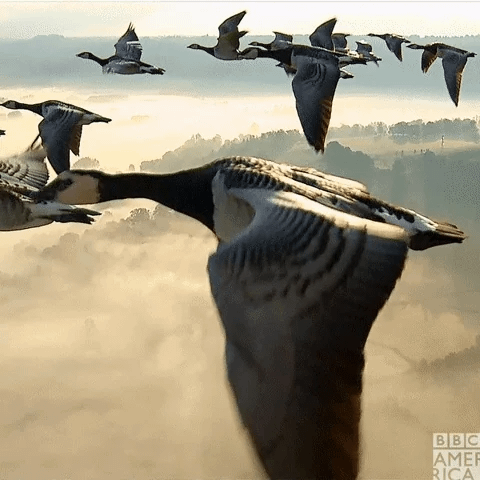Subconscious Creativity
How to prime your brain to do the work for you & why happy friends make us rich.
My friends!
This week was a doozy. My body was exhausted… I gave myself permission to rest and even nap! I surrendered - for like THREE WHOLE DAYS - and then I got chills and a fever, and by Thursday I was frustrated!
Cut to me fully horizontal on bed (because sitting up was too painful for my geriatric back) trying to finish this newsletter so I could send it out on time!
My point is, none of us are infallible to ‘productivity culture’, even those of us who know better.
I tried to coach myself, Lauren - it’s cool, no one will care, you need to rest. But the ego version of me was all but I caaaare. I can do this, stop telling me to rest, dammit! Eventually my body was like okay guys, I’ll make it easy for you - I’ll turn your brain into mush so you have no choice.
So I binged Love is Blind UK, read a fiction book(!) and leaned into SLOTH life. It poured rain here all weekend, so that helped calm the FOMO brain.
I’m happy to report that I can sit upright again and was finally able to finish this bad boy and send it out to you. As always, just wanted to show up as me and let you know that I’m on this growth train along with you!
This week I’m reading Creative Thinkering by Michael Michalko. If you’re looking for a full brain workout (and not a sloth read) - this book is for you.
This book dives deep into the way our creative brains think, and how/why creative thought is initiated. Every chapter is filled with exercises and thought experiments so that you can test your creative thinking in real time.
One of my favorite things about reading, or learning something new, is discovering the overlaps between what I believe, and my own community zeitgeist: the current topics of conversations with friends and client friends.
I get to learn something from someone else’s perspective. I get to see/hear how they digest similar information, and how they untangle it. Then I get to cross reference with my own thoughts and beliefs on the subject.
Creativity is finding the interconnectedness between all things, a crucial component of creative thinkering.
You could call it cognitive bias or cherry-picking, but I call it a treasure hunt.
This week’s treasures:
Creative Nuggs
The value of Rest, Incubation, and the Subconscious mind
Ever been stuck on a project you’re working on? Your brain feels fried and you’re not sure which move to make next?
Michalko reminds us that taking breaks and forgetting about the problem allows the information to come back and grow clearer.
There is a Chinese term that describes this: wuwei, or “not doing.” This doesn’t mean “doing nothing”; it means “not forcing.” Things will open up according to their nature. And they do.
Cognitive scientists have studied this period of idea incubation:
People are more creative after they forget about the problem for a period of time, but they don’t know it. It’s as if the period of incubation resets your mind.
Permission to step away from the project that is making things feel crunchy! The trick here is actually taking a break from it. If you’re doing something else but you’re consciously thinking about the project, it doesn’t count.
In my experience, it’s best if the thing you switch to requires a different brain function or skillset. For example, you’re stuck on a creative project, you might need to move your body, change locations, do your taxes(!) or meet up with a friend. It can feel like you have to literally pry yourself away…but trust that it’s the most efficient way to solve your problem…
Taking Cues from Nature
Perennial plants reserve energy (as opposed to blooming at full capacity like Annuals) so that they can emerge year over year.
Michalko likens our creative brains to that of Perennials - “when we are working on a problem, we reach a point when our brains shut down” so that we can reserve energy.
If we look to nature, we can take that as our cue to allow that incubation time, trust it’s being worked on, and expect to see the creative blooms.
Michalko shares an awesome thought experiment that I will definitely be trying. In short, it’s writing a letter to your unconscious mind about your problem.
Give your unconscious a directive, ie. “your mission is to find the solution to the problem in two days”. And then let it go!
(Interested in the full experiment? Send me a note and I will share it with you.)
Your Subconscious and an Egg:
If we imagine watching an egg sitting in a nest for several days, we might become a little impatient, perhaps bored.
Michalko uses Silvia Hartmann’s words - “yet inside the egg is a riot of change is taking place — a storm of reorganization, feeding, and growth — a bunch of random cells become an entity.”
We can use our subconscious mind as a wonderful resource.
Once you learn how to listen to it, it’s like listening to an egg cracking open, followed by more and more unconventional thoughts that emerge from your subconscious like tiny birds emerging from their eggs.
How do we do allow our subconscious mind to work for us?
Ask for Clarity (detailed in above thought experiment)
Loosen the grip - interrupt the thought that tells you if you force yourself to work on it that you’ll figure it out. Practice wuwei
Change the Input or Output - switch up your activity, go do something fun or work on something that requires a different part of your brain.
Trust. Trust that your subconscious is working in your favor.
The Beauty of Priming
Vision Boards:
In a fascinating study by social psychologists at Tufts University, Michale Slepian noticed that during a study on “bright ideas,” participants became more insightful and creative when they were primed with an exposed or illuminated lightbulb!
This is the science behind creating vision boards.
—> Stay tuned for an upcoming (free) workshop that will feature the creation of vision boards. Send me a note if you know you’re interested.
A new puzzle piece for vision boards:
Ask yourself what it is you want to create and place that in the centre of the board.
After you’ve collected the pieces that relate to that for your board, use your intuition about where to place them on the board. You may decide to place them based on themes - maybe: “What I have / What I will have / What I need / How to get what I need.”
Put it somewhere you’ll see it every day, which will prompt you to add pieces and/or remove pieces that no longer resonate.
You’ll discover that the board will add clarity to your desires, and feeling to your visions, which in turn will generate an awareness of the things in your environment that can help you realize your vision.
Let your subconscious do the work for you!
I love this approach. I’ve understood the science of priming, (ie. seeing a lightbulb makes you feel more creative) but I hadn’t connected the dots that the subconscious brain becomes an “extraordinary pattern-recognition tool” that will perceive blanks for what is missing on your board (or missing in your approach to obtaining what you want), and then will actively work to fill in the gaps to realize your vision.
This could come in the form of new ideas, expanding your vision to perceive more, or intuitive hits that lead to inspired action.
Priming & Language:
Starting any behaviour pattern is easier than stopping one.
We tend to speak in the language of ‘deficit’ or scarcity.
This is a practice of speaking about what is, vs. what is not. There is a coaching model that I like to use called Appreciate Inquiry. It emphasizes what is already good, what is working - it welcomes idea generation, vs. an identification with a negative problem (deficit-based).
Language primes our brain, much like that of a vision board.
Michalko shares Joseph Campbell’s admiration for Japanese speech known as ‘Play Language’ (asobase kotoba).
instead of saying to a person, for example, ‘I see that you have come to Tokyo,’ one would express the observation by saying ‘I see that you are playing at being in Tokyo’ — the idea being that the person addressed is in such control of his life and his powers that for him everything is play, a game. He is able to enter into life as one would enter into a game, freely and at ease.
Prime your mind with a simple language reframe. What is going really well? What are you playing at?
You are in charge of…
Creating your Own Experience
Being a creative person (that’s you!) gifts you with a huge advantage to create the reality you desire.
The human brain cannot tell the difference between an ‘actual’ experience and an experience imagined vividly in detail.
Whatever you believe, you become. Reality conforms to your belief.
It’s scientifically proven.
And yet, most of us only see what we don’t have, and who we are not, and we dwell here, and thus create that reality.
We all do it.
The first step is to catch yourself.
Recognize the deficit based language - the lack of possibility, and reframe it (what if it is possible?)
Next, spend some time in your creative mind. Fantasize about what you would really like to have occur - with no limitations.
Allow yourself to feel the feelings associated with already having it.
The more we believe it, the more our brain thinks we already have it.
Priming your brain by making space/not forcing, creating clear directives, using your intuition with your vision board, using language to your benefit, and prioritizing mental/emotional rehearsal of your desires — allows the subconscious to work on our behalf.
Upon my own exploration, Wuwei also translates to effortless action. With a little priming, we can employ the subconscious to take action, which in the moment, feels effortless.
It’s like our subconscious is one of those truffle hunting dogs.
We give it a little sniff of the result we want (priming) and send it off into the world. Then we go back to our business and wait for the treasure.
That’s efficiency…am I right!?
Mmm truffles.
The Untangling
We all love talking about our dreams, or taking classes, or reading books, or writing/journaling about them.
We get pumped right up, and fascinated or enamoured, we GET READY TO BE READY…
Sooo what holds us back from pursuing our dreams?
We squeeze all the juice out of the thinking about it, that when it comes time to the actual doing of it—
All of the yum is wrapped up in the dreaming, not the doing.
So we think.
Michalko shares a parable teaching from the philosopher Soren Kierkegaard that speaks to this COMPLETELY NORMAL HUMAN TRAIT.
A flock of geese lived together in a barnyard surrounded by high walls. They felt secure, they had great food, they did not feel the need to take any risks… why would they?
Until one day a philosopher goose came to stir the pot. He challenged them to consider what kind of life might exist outside of the high walls. He inspired them to believe there is an even greater world outside of their containment. He asked them to remember that they have wings and consider what their forefathers knew of the outside world.
The geese thought the lecturing was quite poetic, and a “flawless summary of the mystery of existence.”
The philosopher goose continued to regale them with stories of beauty, wonder, and freedom on the other side.
The geese were captivated, uplifted, inspired — so much so that they became teachers on the subject, and philosophers themselves!
But they never flew.
The food was good, and the barnyard was secure.
Ooof.
We all experience this, don’t we?
What are the ‘walls’ that are currently helping you feel secure?
Last week we talked about beliefs, maybe there is a belief that IS actually serving you; serving you because it allows you to feel secure.
If we start to challenge that belief, maybe finding a crack in it and seeing some possibility—and that it’s not as solid as we think—then what?
We can’t unsee what we’ve now seen. Can’t put that genie back in the bottle.
Which means we may actually have to be honest with ourselves and do something about it.
Ugh. That does not feel safe and secure!
It feels easier if that belief just stays exactly where it is - until it feels harder to ignore possibility.
I recently started working with someone who brilliantly recognized she was keeping herself safe or “stuck”, and felt it was time to take the plunge to move forward some of her goals. She knew that she may never feel “ready,” she just had to decide to start.
Ultimately she wanted to feel the freedom of being ‘unstuck’, and the freedom in knowing she was taking action towards her goals.
She committed, she started to take action, and then she immediately hit a wall.
Wait, I’m not feeling freedom at all, I’m feeling more fear.
Something immediately felt wrong.
Maybe I don’t want this. Maybe this direction is a bad decision and I shouldn’t change anything. I wouldn’t be feeling fear if it was the right direction.
I reminded her that hitting this wall now, is actually perfect. It means we can unravel whatever is causing the block early, so she can actually move forward.
If the geese had decided they were going to fly, they may well make it to the top of the wall and perch there to get a good look at things. It would be entirely unnatural for them not to feel fear about venturing out, because it’s all unknown! What if they can’t find their way back to the barnyard?
We are very familiar with the known of our safety nets, and it feels scary to risk leaving it.
Different kinds of Fear
If we can quiet our brains for moment — sometimes a few deep breaths is enough — we can tune into our bodies.
Our bodies know the difference between fear that is actually keeping us safe (the skin crawls, the urge to run, the unsettling feeling, the gut saying NO) and the fear that is our ego trying to keep us safe from emotional discomfort.
The latter is very seldom logical or sound: If I post about my work on instagram, people will think I’m bragging…or trying to sell them something…or think my work sucks…or steal my ideas.
But we’re not always super discerning about which kind of fear it is, and we take this fear business very seriously!
Tune into the difference between the two. The kind we’re going for has the tinge of effervescence beneath the surface - a little nervous energy nudging us forward.
We can start to see this uncomfy but excitable fear as a sign that we’re very close to the edge of something big.
Freedom always exists on the other side of that fear.
It’s the ride down the rollercoaster.
But because we continue to grow, there is inevitably what feels like a taller, faster rollercoaster we want to ride. We don’t always notice that the rides level up, so it can sometimes feel like we’re perpetually scared.
What if we just started seeing this fear for what it actually is?
Excitement.
The thrill-seeking of going after your dreams.
Proof that we’re continuing to grow.
Let’s practice Priming ourselves with this language, and these thoughts.
And let’s listen to our inspirations, be brave, and fly a little higher together.
—Whoever you are, no matter how lonely, the world offers itself to your imagination, calls to you like the wild geese, harsh and exciting - over and over announcing your place in the family of things.
Excerpt from Mary Oliver’s Wild Geese
Abundance Aggregate
There is a story about Leonardo da Vinci in Creative Thinkering.
da Vinci observed that it’s fun to be around happy people, and depressing to be around depressed people.
I mean, duh, but stay with me.
He observed that there was a melancholy atmosphere in many famous portraits, and he speculated that due to the artists solitary environment while painting.
It is said that while painting the Mona Lisa, he hired singers, musicians and jesters to brighten the mood, which is what lead to the timeless piece.
Okay, so maybe a jester is a bit much (and kind of creepy TBH) but most of us ‘solopreneurs’ can relate to the benefit of breaking up with the work day by sharing a laugh, or collaborative energy, with someone we enjoy.
Hundreds of years later, Professors at Harvard (Christakis and Fowler) conducted a study to find out who is happy and why.
What they found is that people who surround themselves with happy, positive people people are not only happy but their happiness is contagious as well.
Christakis and Fowler concluded that that having an extra $5K in annual income (in 1984 - roughly $13K now) increased the probability of a persons happiness by about 2%. On the other hand, a happy friend is worth about $20,000 in annual income.
I write a lot about the abundance of community, how like-minded people who share similar values and genuinely care for each other, can and will change the world.
If Positivity is contagious, we can quickly see how having even one happy friend can influence your life, and actually make you more abundant.
We can co-create abundance by living a juicy life
Here’s some ways we can do this this week:
When someone pops into your head, reach out to them before you forget.
What if it’s your truffle hunting dog nudging you towards possibly to co-create together?
Spread some love on your community - treat it like a vote for something you want to see more of in the world.
Get up in their instagram comments, buy something from their online (or in person) shop, review their podcast, promote their work, shout out the people you admire and why!
Offer your pro-bono help or expertise to someone you want to see win, with zero expectations of a return.
*I’m not talking about undervaluing or over-exerting yourself - maybe it’s 30 minutes of your time.
Meditate, Journal, or Visualize the Success of your Community.
Prime your brain for seeing them win.
Fill your cup!
Do something that feels so good, just for you! I promise you that it turns you into the type of friend that makes others richer.
These are just a few ideas to get the party started - I would absolutely love to hear your ideas in the comments!
Looking to build community?
This week we’ll announce (via instagram) an upcoming community event for creatives, that focuses on growth, creativity, fun, and of course, an abundant community!
See you there!
xo
Lauren






